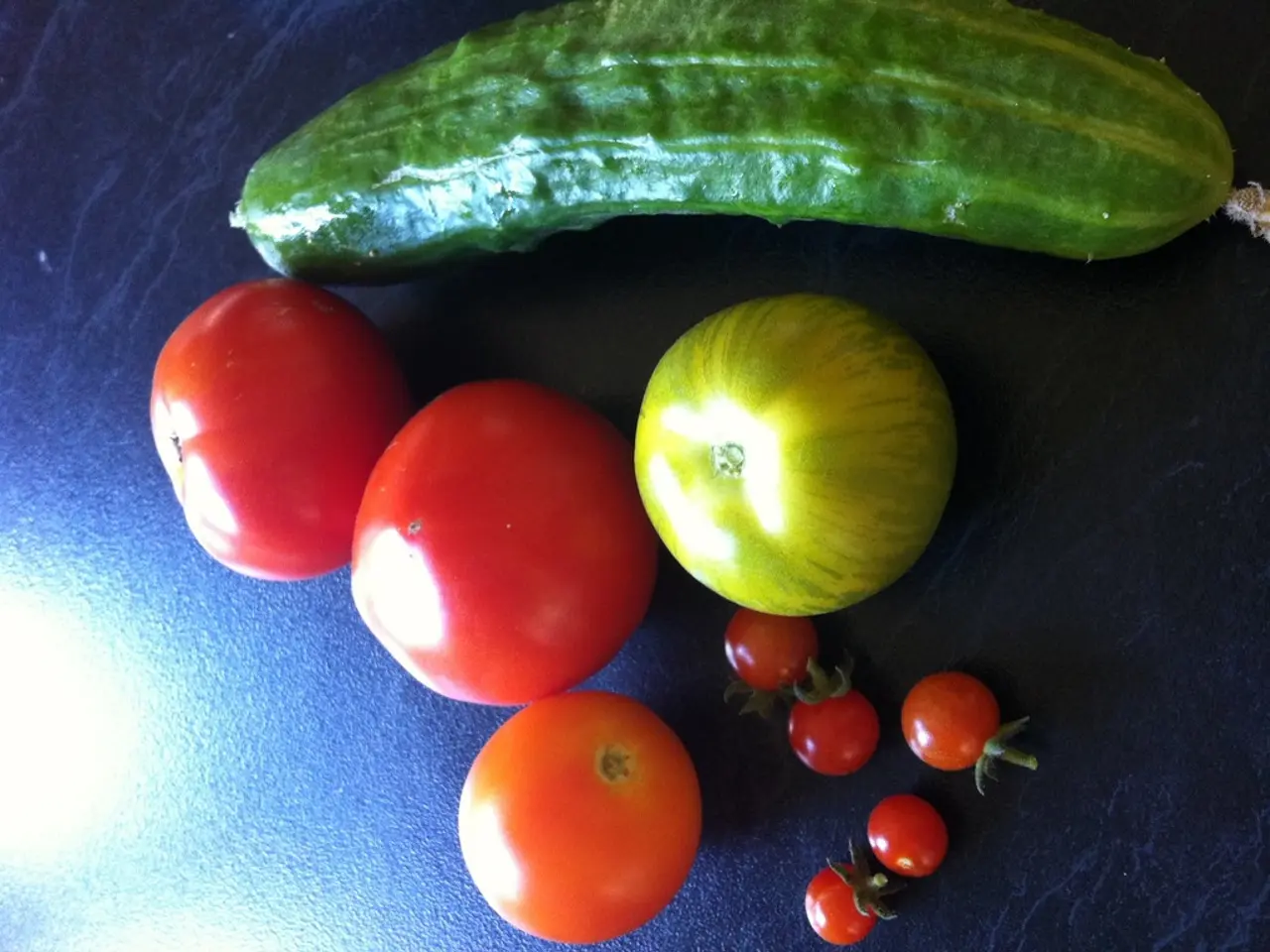Preserving more than just the cans: Strategies for storing a variety of fruits and vegetables during winter months
=========================================================================
As the chill of autumn sets in, ensuring a bounty of fresh produce throughout the winter months becomes essential. Here's a step-by-step guide to freezing fruits and vegetables, helping to preserve their quality, nutrients, and texture.
Freezing Vegetables
The key step in freezing vegetables is a process called blanching. This involves briefly boiling or steaming the vegetables, followed by a quick cool-down in ice water. Blanching stops enzyme activity that causes spoilage, helps retain color, flavor, and nutrients, and prevents microbial growth. Vegetables like broccoli, green beans, carrots, corn, and cauliflower especially benefit from this treatment.
To freeze vegetables, follow these steps:
- Prepare: Rinse, cut as desired, and drain the vegetables.
- Blanch: Immerse the vegetables in boiling water or steam for a specific time (consult a blanching chart for the optimal duration based on the type of vegetable).
- Cool: Quickly transfer the blanched vegetables to ice water to stop the cooking process.
- Flash Freeze: Spread the vegetables out on a tray in a single layer before placing them in freezer bags or containers. This prevents clumping and helps maintain texture.
- Package & Store: Use airtight, freezer-safe packaging to reduce moisture loss and freezer burn. Squeeze out excess air before sealing. Label packages with the date and contents for easier management.
- Storage: Store frozen produce at 0°F (-18°C) or below and use within 8 to 12 months for best quality.
Freezing Fruits
Blanching is generally not needed for freezing fruits, but treating them with an antioxidant like ascorbic acid (vitamin C) or dipping them in lemon juice solution helps prevent browning caused by enzymes. Fruits should be ripe but firm, washed, dried thoroughly, and prepped (pit removed, peeled, sliced, or hulled as appropriate).
To freeze fruits, follow these steps:
- Prepare: Rinse, peel, pit, and slice the fruits as needed.
- Pretreat: Treat with ascorbic acid or lemon juice to prevent browning.
- Flash Freeze: Spread the fruits out on a tray in a single layer before placing them in freezer bags or containers.
- Package & Store: Use airtight, freezer-safe packaging to reduce moisture loss and freezer burn. Squeeze out excess air before sealing. Label packages with the date and contents for easier management.
- Storage: Store frozen produce at 0°F (-18°C) or below and use within 8 to 12 months for best quality.
Drying fruits and vegetables (dehydration) is a different preservation method not fully covered in this guide, but generally involves removing moisture by low heat or air-drying until the produce is leathery or crisp. This can be done using an oven, dehydrator, or sun-drying (depending on climate). Dried produce must be stored in airtight, cool, dark places to maintain shelf life.
In summary, this method of freezing fruits and vegetables preserves flavor, color, texture (especially for vegetables), and nutrients, making them enjoyable during the winter months. For more recipes and kitchen hacks for preserving fruits and vegetables, visit here.
[1] Fruit and Vegetable Preservation, National Center for Home Food Preservation. (n.d.). Retrieved from https://nchfp.uga.edu/publications/publications_usda.html [2] Freezing Fruits and Vegetables, Pick Your Own. (n.d.). Retrieved from https://www.pickyourown.org/freeze.htm [3] How to Freeze Vegetables, Still Tasty. (n.d.). Retrieved from https://www.stilltasty.com/how_to_freeze/vegetables.html [4] How to Freeze Fruits, Still Tasty. (n.d.). Retrieved from https://www.stilltasty.com/how_to_freeze/fruits.html [5] How to Freeze Vegetables, The Spruce Eats. (n.d.). Retrieved from https://www.thespruceeats.com/how-to-freeze-vegetables-1469250
- Adopting healthy-cooking techniques, such as freezing fruits and vegetables, can contribute to maintaining a balanced food-and-drink lifestyle even in the colder home-and-garden months.
- The global-cuisines scene is enriched by the practice of preserving seasonal produce through freezing, as it enables access to a wider variety of fresh foods throughout the year.
- For those following a particular lifestyle that emphasizes healthy eating, knowing the proper methods for freezing fruits and vegetables ensures that nutritious options remain available during autumn and winter, helping to support overall well-being and enjoyment of food-and-drink.



